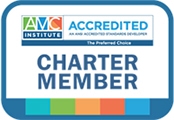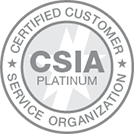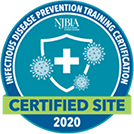Photos have a universal meeting. Photos can be emotive, relatable and influential. Most importantly, photos affect how people perceive a brand. Think about it! Have you been to a website with poor image quality? How did that make you feel? Did you trust that brand after looking at its photos? Photos that are connected to a brand have a tremendous impact on how individuals perceive that organization.
As a non-profit professional, it’s important to know how to take and choose quality images that fit your brand. Whether they’re promotional photos or Instagram posts, the images your organization share play a huge role in brand awareness. In this post, we’ll discuss techniques that will help improve your brand’s photo quality.

Take or Choose Quality Images:
In most cases, your organization should be posting high-resolution images. In fact, high-resolution imaging is standard on most modern cameras. So remember, when you’re ready to post, choose photos with the best resolution and the least pixelation. Believe it or not, poor image quality can tarnish a brand’s credibility.
Lighting:
Lighting is key! Most likely you’re relying on natural light when taking photos. Now, lighting may seem simple, but most photographers put tremendous effort into their light setup. Avoid taking pictures in the dark, unless you have the proper equipment. If you shoot midday, look for shady areas that can block or diffuse direct sunlight. If you typically photograph in dark settings, you may want to consider a DSLR camera or hiring a professional. Phones typically need good lighting for optimal picture quality.
Note: The ideal uses for natural light are outside on cloudy days, sunsets and sunrises. Avoid shooting around noon! The sun is the brightest midday which results in blown out images or squinting subjects.
Choosing the Right Camera:
Make sure you have the right camera for the right task. Not every camera is suitable for conference photography. On the other hand, professional cameras aren’t always necessary for a quality social media post. Choose the right camera for the right job. Do a little research and be creative with your picture taking. Sometimes everything you need is already in your arsenal.
Choosing the Right Shot:
Try to avoid taking pictures that don’t go anywhere. You want to take pictures that convey the most information while showing the least clutter. Your photo should be straight forward and have a clear message for your viewer. Eliminate the unnecessary clutter from your photograph. For instance, if you’re working an event, don’t just take pictures of crowds. Though huge crowds can look impressive, these pictures don’t really convey much about the event (except that your event has big crowds). Look for the little moments! People laughing, members exchanging business cards, cool little details about the conference set-up, etc. It’s the little things that really help embody the excitement of an event. Find those little moments.
Make a List and Prepare:
It helps to know what photos you’ll want to promote. Whether it be at an event or for social media, plan ahead for what you’ll need. If you’re at an event, make sure you prepare a shot list and a shot schedule. Try to arrive early to the event and evaluate your surroundings. Check for good lighting and objects that will help enhance your photos.
If you’re taking pictures for social media, make a list of photos and start shooting weeks before you’re ready to post. This way you’ll have photos prepared and can shoot more relevant photos as trends arise. Make sure you save your photos properly and create a personal archive.
The lesson here is plan accordingly.

Ask for Help:
It’s hard coordinating a photo shoot, especially with people and their busy schedules. Even professional photographers find it difficult. I advise bringing a helper and be transparent with your subjects. Don’t be afraid to ask your helper and your subjects their opinions. Openly communicate what you need to get the job done.
Get Variety, Not Quantity:
Make sure you take a lot of pictures but avoid taking pictures of the same thing. Get creative! Switch up your view and look at all the possibilities. If you have the time, make sure you cover every inch of the event. The most engaging pictures are of people, so don’t be afraid to ask for a few snapshots.
As a non-profit professional, you’re probably used to wearing multiple hats. Sometimes you just don’t have the time to be a world class photographer, but with these tips, you’ll, at least, have the basics. Remember to take your time, prepare properly and be creative! If all else fails, look for a professional photographer who understands your vision, and can capture the quality you need.





